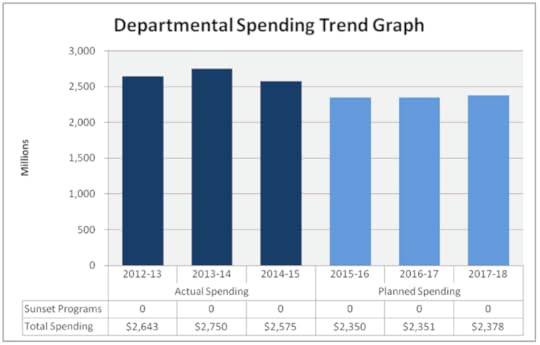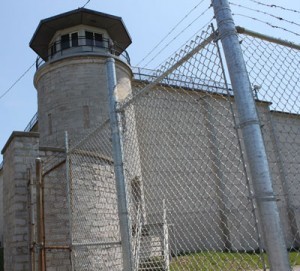Prison service can’t contain spending or limit inmate deaths, report shows

 Despite an enormous infusion of cash in the past decade, the agency that runs the country’s penitentiaries has failed to deliver on longstanding promises to reduce prisoner deaths and has failed to limit critical security incidents that endanger staff and inmates, a newly released report card on the operations of Correctional Service of Canada reveals. “I continue to be very frustrated that CSC continues to deal with deaths in custody as sort of one-off events and not paying enough attention to the patterns and the common issues that contribute,” says Howard Sapers (inset), the federal correctional investigator. (Hear the full interview with Sapers, after the jump, in Episode 1 of the Cancrime podcast).
Despite an enormous infusion of cash in the past decade, the agency that runs the country’s penitentiaries has failed to deliver on longstanding promises to reduce prisoner deaths and has failed to limit critical security incidents that endanger staff and inmates, a newly released report card on the operations of Correctional Service of Canada reveals. “I continue to be very frustrated that CSC continues to deal with deaths in custody as sort of one-off events and not paying enough attention to the patterns and the common issues that contribute,” says Howard Sapers (inset), the federal correctional investigator. (Hear the full interview with Sapers, after the jump, in Episode 1 of the Cancrime podcast).
***

Corrections Canada spending and budgets from 2012 through 2017 (Source: CSC Departmental Performance Report, 2014-15)
The departmental performance report made public last week (January 25) shows that, while the former Conservative regime in Ottawa pledged four years ago to spend less on prisons, Corrections Canada spent nearly a quarter of a billion dollars more in the last fiscal year than first budgeted. Corrections spent $2.57 billion in 2014-15, up 61 per cent from the $1.6 billion spent in 2005-06, when the Harper-led Conservatives came to power. The fiscal year covers the 12-month period that ended April 1, 2015. In 2012, then Public Safety Minister Vic Toews announced that CSC had been ordered to cut $295 million in spending by 2015, part of a government-wide deficit reduction plan. In 2012, Ottawa also shuttered three institutions including maximum-security Kingston Penitentiary and claimed the closings would save $120 million annually. The latest report includes no evidence those savings have been realized. Sapers says he “never understood where that money was going to come from.”
Corrections had a budget of $2.35 billion for 2014-15 but the service spent $2.57 billion last year and yet, in a remarkable bit of accounting, reports an end-of-year “surplus of $90.4 million,” according to Lori Halfper, a spokeswoman for Corrections Canada at its national headquarters in Ottawa.
Halfper explained, in an emailed response to a request for comment, that, part way through the year, the agency got the green light to boost its budget. “CSC received additional authorities for $330.9 million through established approval processes,” Halfper explained. CSC didn’t spend all the extra cash so it is now claiming this qualifies as a surplus.
The departmental performance report reveals that 20 prisoners died “non-natural deaths” while behind bars – a definition that includes murders, suicides, use of force, accidents and undetermined deaths. Five died in what CSC calls “critical security incidents” – murder, use of force and undetermined deaths.
“CSC did not meet its own expectations in the area of critical security incidents in institutions,” the performance rate states. A similar refrain appears several times in the document. “Despite persistent efforts, CSC did not meet its own expectations in the area of critical safety incidents in institutions,” the report notes, a reference to deaths by suicide or accident, which totaled 13 in the year.
The total of 20 deaths overall is up from 18 the previous year and down from 25 in 2012-13.

The Tory government claimed in 2012 that closing maximum-security Kingston Penitentiary and two other institutions would save $120 million yearly (Photo: Rob Tripp)
The rate of non-natural deaths was 1.34 per 1,000 prisoners, a level that Sapers, the prisons watchdog, believes may be higher than the rate recorded a decade ago. In the past 10 years, a litany of reports from his office, coroner’s inquests and CSC’s internal investigations exposed chronic problems that required urgent attention. In 2007, a study commissioned by Sapers of 82 prison deaths over five years concluded that CSC was not incorporating lessons from past incidents. It found “serious errors” in assessing suicide risk and “gross errors” by medical staff who responded to emergencies.
“Enhancing safety and security for staff and offenders in institutions is one of four operational priorities for CSC over the next few years,” states CSC’s departmental performance report for 2005-06.
“The frustrating thing is, is that those efforts aren’t having the intended result,” said Sapers. “And, in part, it’s because while those efforts exist, they tend to lose momentum. We were supposed to have annual expert reviews of deaths in custody. We’ve had three in the last nine years. We’re still waiting for the response from the last expert review which is now, I think … already two years old.”
Sapers said there have been “many, many commitments” from Corrections to address recommendations of dozens of reports and investigations that have clearly identified the problems. He said he can’t explain why Corrections has failed to address issues, despite claims that it understands the problems and is committed to change. He says CSC has never provided a full, appropriate response to 104 recommendations that flowed from an inquest into the death behind bars in 2007 of 19-year-old Ashley Smith.
Criminologist Justin Piche says CSC appears unable to control its spending.
“A significant reason for this is that the federal penitentiary population has increased in recent years in conjunction with the Conservative punishment agenda that aimed to send more people to prison for longer periods of time with fewer chances of release,” said Piche, an assistant professor at the University of Ottawa who studies the prison system. “In the process, CSC has also failed to meet many of its objectives.”
He says the “Canadian carceral experiment is a costly and unjust failure.”
“If the new Liberal government is serious about changing things, it will need to conduct a rigorous review of the criminal justice system, assessing everything from what we criminalize in this country to how we can better prevent harm and respond to the needs of everyone impacted by it,” Piche said.
He said Ottawa should immediately reinstate accelerated parole for first-time, non-violent offenders – a measure scrapped by the Conservatives – and should determine why there is such a disparity between CSC recommendations for prisoner release and parole board decisions.
***
Here’s CSC’s 2014-15 fiscal year departmental performance report, made public January 25, 2016 (on mobile? click here to read document):
Cancrime
- Rob Tripp's profile
- 8 followers




